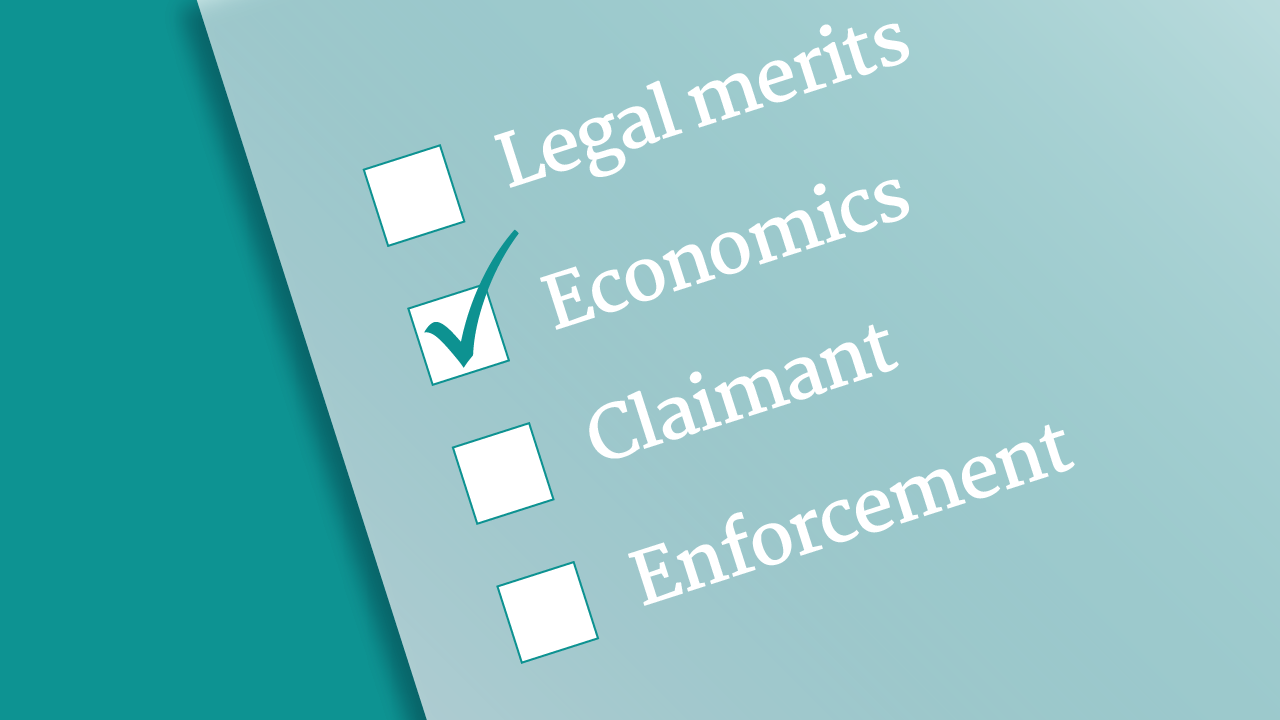
 Back to News
Back to News
There needs to be sufficient “headroom” on the damages : legal costs ratio, to ensure that the claimant receives a significant proportion of any return and is therefore fully incentivised. For that reason, a good rule of thumb to work on is a ratio of 10 (damages): 1 (funded costs). Additionally, as a third-party funder, we provide a unique approach to assist clients when analysing the economics of a potential case and the reasons are set out below.
Projected damages and proposed budgets are carefully analysed by funders as part of the due diligence process. We want to ensure that the damage projections are realistic and for that reason, preliminary quantum expert advice is invaluable. To support prospective claimants with this process (and rather uniquely for a funder), we have an internal economist to provide feedback on projected damages. Our economist liaises with the client, their legal team and any expert already instructed by the prospective claimant to ensure that the most appropriate quantum figure is put forward. We see this as a beneficial process as, from an early stage, it allows all parties to be acutely aware of the realities of the quantum claim, which can inform case strategy and claimant expectations.
In addition to an internal economist, as part of the diligence process, we may also seek (at our own cost) to instruct an independent expert to review and examine the existing quantum analysis. This also helps to ensure that the prospective client’s quantum is properly formulated from the commencement of proceedings.
We also want to ensure that the legal team has sufficient resources to properly pursue the case. As part of our diligence process, we use our substantial experience in having funded over 240 cases to properly interrogate the proposed budget and ensure that proper provision is made for the fees that will be incurred over the course of proceedings. This, in turn, also ensures that adequate ATE insurance is taken out (this is less of an issue in arbitration cases where ATE insurance is generally not required).
We are currently focused on claims with a minimum commitment (in terms of funded costs) of £5m, with special consideration for claims down to £2.5m that show exceptional risk/reward prospects. The £5m minimum does not need to apply exclusively to the funding budget, as, amongst other innovative proposals, we can provide; (i) an upfront “monetisation” payment in return for a larger share of any potential judgement; (ii) portfolio funding; (iii) case assignments; or (iv) monies to acquire claim.
We are willing to work with prospective clients to ensure that any claim works for all interested parties.
Curious to find out what the fundamental legal merits of a claim are? Check out the first blog in the ‘Litigation funder’s checklist’ series, ‘The litigation funder’s checklist: legal merits’.
Next in our ‘Litigation funder’s checklist’ series, we’ll be understanding a claimant’s motivations in pursuing a proceeding, ensuring that they are well-versed in the risks and time-commitment involved in pursuing litigation.
…
If you are considering litigation funding and have a case which broadly meets the above criteria, please do not hesitate to contact Glyn Rees or a member of our team of litigation funding experts to discuss the process in further detail.